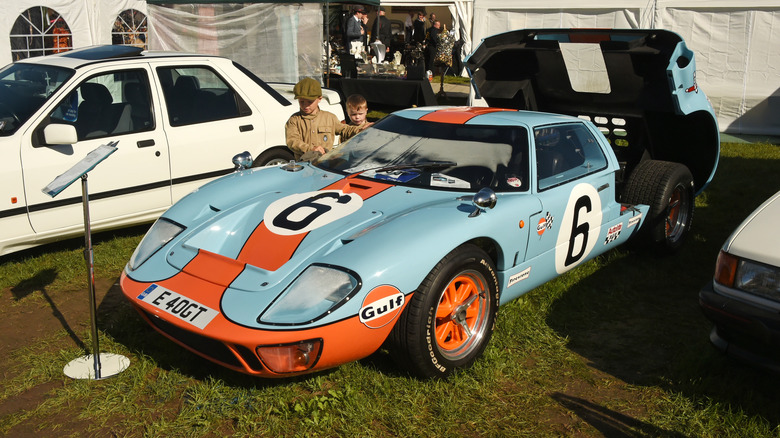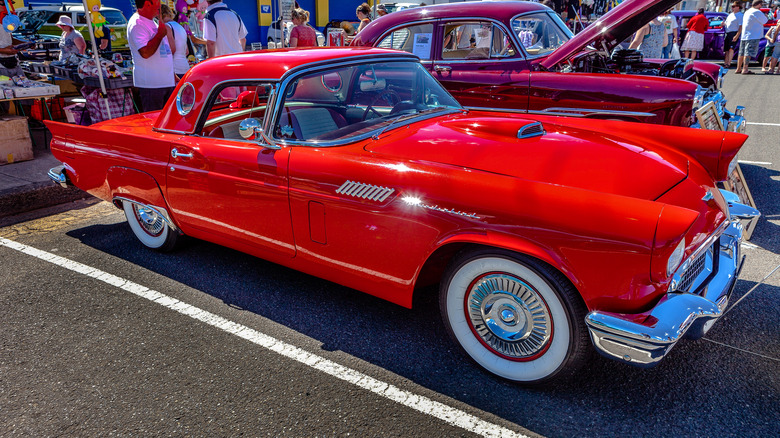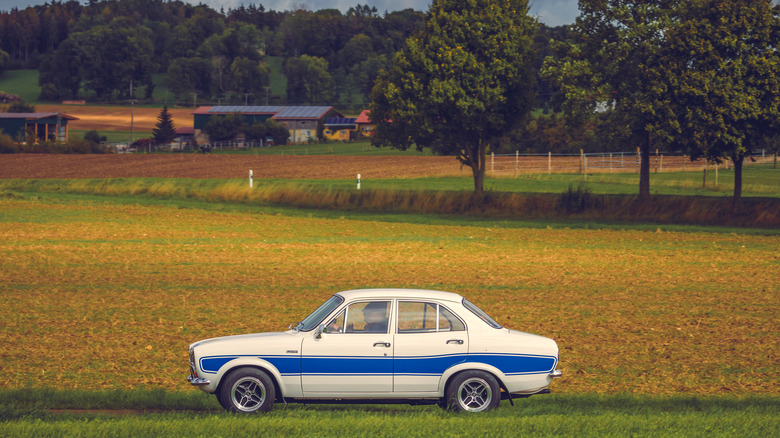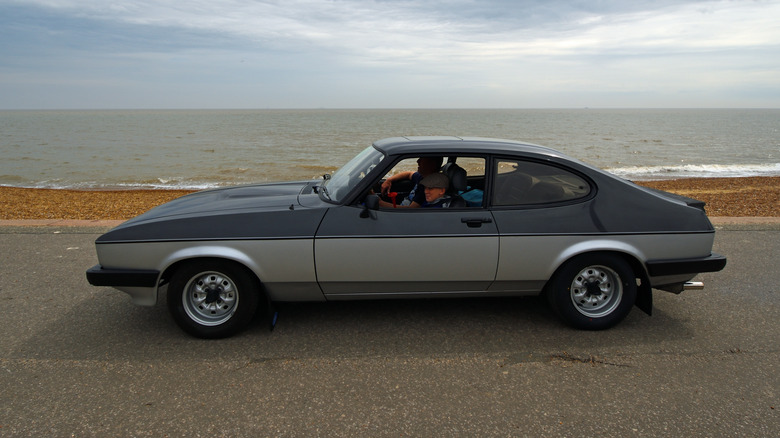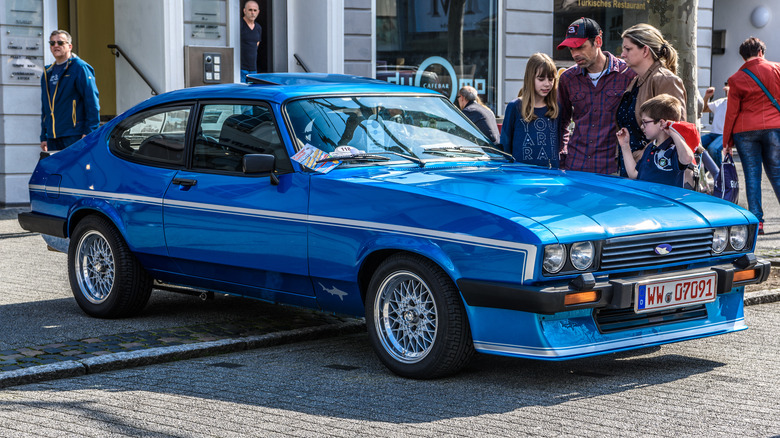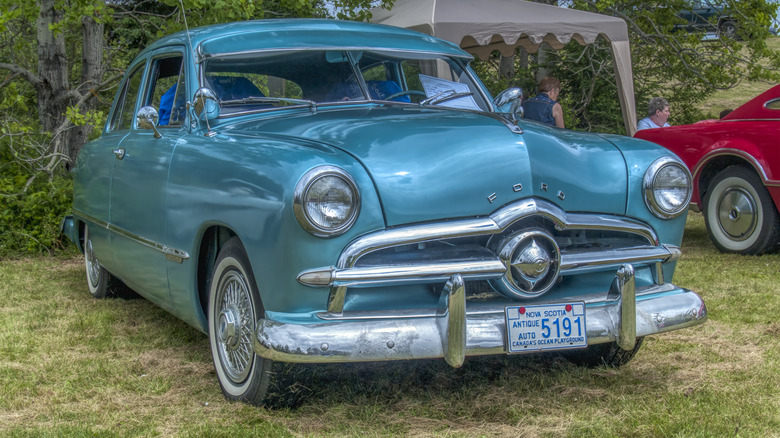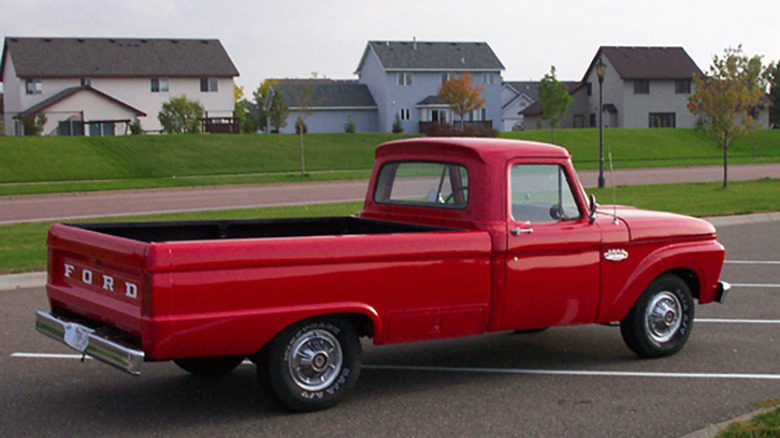6 Underrated Engines That Powered Some Of Ford's Coolest Vehicles
Ford established itself as a market force when it introduced the Model T in 1908. The country's first mass-produced car stayed in production through 1927 and sold more than 15 million units. The assembly line process and Model T's four-stroke water-cooled T-4 four-cylinder engine were key elements in the car's success. In the nearly full century since the Model T was discontinued, Ford has brought us auto industry icons like the best-selling F-150, the Mustang, and the sleek, LeMans-dominating GT40. The GT40 was powered by a 427 cubic inch V8 developed by engineer Bob Lunn. That engine was also used in the Shelby Cobra, the Fairlane, and the Torino, and is generally regarded as one of Ford's best.
Not all Ford's engines are as beloved or storied as the 427; in fact, many of the automaker's finest motors don't get the respect they earned powering some of Ford's most interesting cars, trucks, and SUVs. SlashGear is here to do our best to right decades of wrongs regarding these undervalued powerplants.
Supercharged 312 V8 (1957 Thunderbird)
Any discussion of Ford's coolest vehicles must include the 1955-57 Thunderbird. Perhaps one of the era's most beautiful cars, and undoubtedly the one with the coolest name, the Thunderbird was unveiled at the 1954 Detroit Auto Show and went on sale that fall as a 1955 model. The first year, the only engine available for T-Bird buyers was a 292 cubic inch V8, but for 1956 a 312-inch motor was added to the list of options. The next year was the last for the original two-seat Thunderbird design, and an F-code supercharged engine option was available for an additional $340 (via Christie's). That pushed the cost of a supercharged Thunderbird with all the available factory options to a little over $3,700 (about $40,600 today).
Those add-ons included power steering, brakes, and windows and the Ford-o-Matic transmission. This was a three-speed gearbox that was usually started in second, essentially reducing it to a two-speed unit. The 1955-57 Thunderbird outsold the Corvette over that three-year span by about 4.5 to one, and the supercharged '57 model could go from zero to 60 mph in 6.2 seconds (via Automobile Catalog). The F-code's expense and racetrack power made it a rare choice for buyers; according to Bring a Trailer, only about 200 supercharged '57 Thunderbirds left the lot.
2.0 liter four-cylinder (Escort RS2000)
The Escort is known in North America as one of Ford's less interesting econoboxes, with a production run from 1981 through 2003, when it yielded to the Focus. The name had been used previously in Europe for a sportier model, which debuted in 1968 and saw success on the rally circuit thanks to the 1,558 cc Lotus engine that was also used in the Cortina. Updates in 1970 and 1975 saw that engine replaced by 1.6 and 1.8 liter fours of Ford's own design, topped with a 16-valve Lotus cylinder head.
The last rear-wheel drive European-market Escort was the RS2000, which was sold from 1976 through 1980 and had a 2.0 liter, 8-valve four-cylinder engine under its hood. This engine was easier to tune than its predecessor, but the 8-valve head meant power output dropped from 115 to 110 horsepower despite the increase in displacement. The RS2000 had a curb weight of just 941 kg (about 2,075 pounds), so the peppy four-banger could get it from zero to 60 mph in just 8.6 seconds. Two twin-venturi Weber carburetors were available, making the RS2000 easy to tune and maintain, if not necessarily state-of-the-art. Beginning in late 1978, a Custom trim version was offered, which included fishnet Recaro seats, a remote driver's side mirror, and 13-inch alloy wheels.
Cologne 2.6L V6 (Capri 2600)
The Mustang and Shelby Cobra captured the hearts and right feet of American drivers with their large, gas-guzzling V8s in the mid to late 1960s. European buyers were more concerned with fuel economy and navigating narrow city roads, so Ford developed the Capri, with the mechanical underpinnings of the Cortina and a fastback body borrowed from the Mustang.
Capris were built at various factories around Europe, and early models made on the continent got engines ranging in size from 1.3 to 3.1 liters, although the "Perana" version made in South Africa got Ford's 5.0 liter Windsor V8. The British engine shop Weslake crafted a 2.6 liter version of the Cologne V6 for use in the Capri 2600, a special sporting edition of the model that was built in 1970 to meet FIA homologation requirements.
The engine had alloy cylinder heads and Kugelfischer fuel injection, and could sling the Capri 2600 from zero to 62 mpg in 7.7 seconds (via Silodrome). The first 50 units of the car were built with weight savings in mind and had fiberglass panels in the hood, doors, and trunk lid. Carpet, a heater, and undercoating were eliminated to further lighten the car until it was certified for racing by the FIA. The Capri 2600 won back-to-back European Touring Car titles in 1971 and '72.
3.0 liter Essex V6 (1974-1981 Capri)
The first generation of the non-racing spec Capri ran from 1969 through 1974, and during that span the largest engine option available to European buyers was the 3.1 liter V6 in the RS3100. This engine was put in production cars to meet FIA homologation requirements, and the de-tuned consumer version made 148 horsepower (via Auto Express). The next step down for Capri customers was the 3.0 liter Essex V6, which produced 10 fewer horsepower but was still capable of speeds over 100 mph. When the second generation debuted in 1974, Ford dropped the larger engine in response to the oil crisis.
By the time the Capri was updated again for the 1979 model year, the 3.0 liter Esssex V6 produced 136 horsepower and 173 lb-ft of torque, according to Automobile Catalog. With the Capri still tipping the scales at just over 2,500 pounds, that was sufficient to hurl the car from zero to 60 mph in 8 seconds and to a top speed of 121 mph. By comparison, a 1979 Chevy Impala with a 5.0 liter V8 took 13.3 seconds to get from zero to 60 and topped out at just 104 mph (via Automobile Catalog).
Flathead V8 (1949-53 Ford and Ford Custom)
When Ford shifted from wartime to civilian production after World War II, designer George Walker created the 1949 Ford and Ford Custom using a revolutionary new aerodynamic design. According to Ford's website, more than 1 million 1949 Fords were made, and those two models are credited with pulling Ford back from the financial brink and restoring it to profitability. The flathead V8 used in the 1949-53 Ford was among the last of its ilk; Ford went to overhead valve technology with the Y-block V8, which debuted in January 1954.
The 1949 Ford and Ford Custom get most of their attention for their award-winning design, but the final iteration of the Flathead V8 that went under their peaked hoods was the result of two decades of refinement and innovation.
The flathead had a gear-driven camshaft and a water pump for each bank of cylinders. Solid lifters worked directly on the valves, and improvements to the lubrication and cooling systems came steadily throughout the engine's lifespan.
Perhaps the biggest leap forward came in 1949, when Ford separated the bellhousing from the block and added a modern distributor in the front of the engine. Although the flathead design is now largely considered obsolete, it had an advantage over overhead valve engines in that there can be no interference between pistons and valves in the event of a timing belt or chain failure.
300 cu in I6 (1965-1996 F series)
Ford's F series wasn't its first light truck model, but the line that debuted in 1948 helped establish the pickup as a popular choice for suburban cruisers and take the segment beyond its original market of farmers and other commercial users.
The first four-door crew cab F series truck came in 1965, and that year Ford also introduced a 300 cubic inch straight six engine. Early versions of this engine produced 170 horsepower and 283 lb-ft of torque (via Engine Facts), but when manufacturers were forced to switch to net ratings in 1972, the 300's official output dropped to about 120 horsepower. This engine helped Ford trucks win the brutal Baja 1000 three times.
Its shorter-stroked brother, the 240, only lasted until the mid-'70s, but the 300 stayed in use through 1996. Over that span, it was used in tractors, utility trucks, and generators. Although horsepower numbers were never overwhelming, the 300 produced as much as 283 lb-ft of torque, and until 1986 that peak came at just 1,600 rpm. The introduction of fuel injection that year bumped the torque peak to 265 lb-ft at 2,000 rpm, where it stayed until the 300 was replaced by the smaller 4.2 liter (256 cubic inch) V6 a decade later.
The 300's iron block and heads make it exceptionally durable, and carbureted versions benefit from adding long tube headers and swapping out the stock one-barrel carburetor for a two-or four-barrel upgrade.
[Featured image by Disochris via Wikimedia Commons|Cropped and scaled|Public Domain]
